2,3-diaminonaphthalene
Synonym(s):2,3-Naphthalenediamine;DAN;naphthalene-2,3-diamine
- CAS NO.:771-97-1
- Empirical Formula: C10H10N2
- Molecular Weight: 158.2
- MDL number: MFCD00004116
- EINECS: 212-241-0
- SAFETY DATA SHEET (SDS)
- Update Date: 2024-12-18 14:15:30
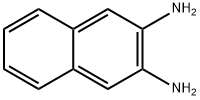
What is 2,3-diaminonaphthalene?
Description
2,3-Diaminonaphthalene is a highly selective colorimetric and fluorometric reagent for selenium detection and also used for the fluorometric determination of nitrite. It is also useful for detection of ketones and alpha-keto acids.
2,3-Diaminonaphthalene reacts with nitrosonium, which is formed from nitrite at low pH, to form the fluorescent dye 1 H-naphthotriazole. This method can be used to detect 10 nM to 10 uM of nitrite (NO2-) and is compatible with 96-well format.
Fluorometric probe for nitrite
Quantify 10 nM to 10 uM of nitrite
Yellow orange solid soluble in DMSO
Chemical properties
colourless to white crystalline powder
The Uses of 2,3-diaminonaphthalene
In a reaction similar to that of DAF-FM , 2,3- diaminonaphthalene (D-7918) reacts with the nitrosonium cation that forms spontaneously from NO to form the fluorescent product 1H-naphthotriazole.Using 2,3-diaminonaphthalene, researchers have developed a rapid, quantitative fluorometric assay that can detect from 10 nM to 10 μM nitrite and is compatible with a 96-well microplate format.
The Uses of 2,3-diaminonaphthalene
2,3-Diaminonaphtaline (DAN) is used as a derivatisation-reagent for the determination of selenium at low detection limits.
The Uses of 2,3-diaminonaphthalene
2,3-Diaminonaphthalene is used in preparation of precursors for multi-layer 3D material comprising chiral organic sandwich compounds.
What are the applications of Application
2,3-Diaminonaphthalene is an inhibitor of nitric oxide formation
Reactions
2,3-diaminonaphthalene (DAN) is a fluorometric probe for nitrite. It reacts with nitrosonium, which is formed from nitrite at low pH, to form the fluorescent dye 1 H-naphthotriazole. This method can be used to detect 10 nM to 10 uM of nitrite (NO2-) and is compatible with 96-well format.
Reaction of 2,3-Diaminonaphthalene with NO2.
Purification Methods
Crystallise the diamine from water, or dissolve it in 0.1M HCl, by heating to 50o. After cooling, the solution is extracted with decalin to remove fluorescent impurities and centrifuged. [Beilstein 13 IV 346.]
Properties of 2,3-diaminonaphthalene
| Melting point: | 197-203 °C |
| Boiling point: | 273.29°C (rough estimate) |
| Density | 1.0968 |
| refractive index | 1.6392 (estimate) |
| storage temp. | Keep in dark place,Inert atmosphere,2-8°C |
| solubility | pyridine: soluble50mg/mL |
| pka | 5.36±0.10(Predicted) |
| form | Crystalline Powder |
| color | Green-brown to brown |
| Water Solubility | Slightly soluble in water. Soluble in pyridine, dimethylsulfoxide, dimethyformamide, dil.hydrochloric acid, ethanol, ether and hot methanol. |
| BRN | 2206394 |
| Stability: | Stable. Combustible. Incompatible with strong oxidizing agents. |
| CAS DataBase Reference | 771-97-1(CAS DataBase Reference) |
| EPA Substance Registry System | 2,3-Naphthalenediamine (771-97-1) |
Safety information for 2,3-diaminonaphthalene
| Signal word | Danger |
| Pictogram(s) |
 Exclamation Mark Irritant GHS07  Health Hazard GHS08 |
| GHS Hazard Statements |
H302:Acute toxicity,oral H315:Skin corrosion/irritation H319:Serious eye damage/eye irritation H335:Specific target organ toxicity, single exposure;Respiratory tract irritation H350:Carcinogenicity |
| Precautionary Statement Codes |
P201:Obtain special instructions before use. P202:Do not handle until all safety precautions have been read and understood. P301+P312:IF SWALLOWED: call a POISON CENTER or doctor/physician IF you feel unwell. P302+P352:IF ON SKIN: wash with plenty of soap and water. P305+P351+P338:IF IN EYES: Rinse cautiously with water for several minutes. Remove contact lenses, if present and easy to do. Continuerinsing. P308+P313:IF exposed or concerned: Get medical advice/attention. |
Computed Descriptors for 2,3-diaminonaphthalene
2,3-diaminonaphthalene manufacturer
New Products
Tert-butyl bis(2-chloroethyl)carbamate (S)-3-Aminobutanenitrile hydrochloride N-Boc-D-alaninol N-BOC-D/L-ALANINOL N-octanoyl benzotriazole 4-Hydrazinobenzoic acid 3,4-Dibenzyloxybenzaldehyde Electrolytic Iron Powder 1,1’-CARBONYLDIIMIDAZOLE R-2-BENZYLOXY PROPIONIC ACID 4-HYDROXY BENZYL ALCOHOL 1,1’-CARBONYLDI (1,2-4 TRIAZOLE) S-2-CHLORO PROPIONIC ACID (2-Hydroxyphenyl)acetonitrile 4-Bromopyrazole 5-BROMO-2CYANO PYRIDINE 5,6-Dimethoxyindanone 5-broMo-2-chloro-N-cyclopentylpyriMidin-4-aMine 3-(Hydroxymethyl)benzoate N-Boc-2-chloroethylamine 1-Bromo-2-methoxy-3-nitrobenzene N-Methyl-3-cyclopenten-1-amine 2-Bromo-3-hydroxybenzaldehyde 1H-indazole-5-carboxamideRelated products of tetrahydrofuran
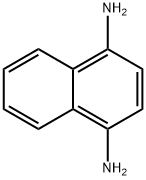
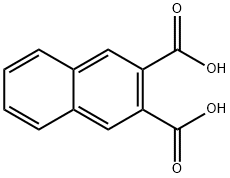
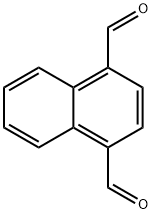
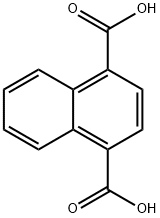
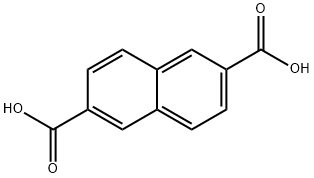
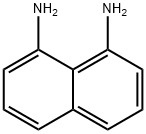
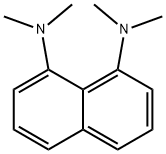
![1,2-DIAMINONAPHTHALENE-5,7-DISULFONIC ACID-IRON,tripotassium tris[5,6-diaminonaphthalene-1,3-disulphonato(2-)-N,N']ferrate(3-)](https://img.chemicalbook.in/CAS/GIF/85187-44-6.gif)
You may like
-
 2,3-Diaminonaphthalene CAS 771-97-1View Details
2,3-Diaminonaphthalene CAS 771-97-1View Details
771-97-1 -
![2,3-Diaminonaphthalene [for Biochemical Research] CAS 771-97-1](https://img.chemicalbook.in//Content/image/CP5.jpg) 2,3-Diaminonaphthalene [for Biochemical Research] CAS 771-97-1View Details
2,3-Diaminonaphthalene [for Biochemical Research] CAS 771-97-1View Details
771-97-1 -
 2,3-Diaminonaphthalene CAS 771-97-1View Details
2,3-Diaminonaphthalene CAS 771-97-1View Details
771-97-1 -
 2,3-Diaminonaphthalene CAS 771-97-1View Details
2,3-Diaminonaphthalene CAS 771-97-1View Details
771-97-1 -
 7441-43-2 98%View Details
7441-43-2 98%View Details
7441-43-2 -
 1260741-78-3 6-Bromo-3-iodo-1-methyl-1H-indazole 98%View Details
1260741-78-3 6-Bromo-3-iodo-1-methyl-1H-indazole 98%View Details
1260741-78-3 -
 2490430-37-8 98%View Details
2490430-37-8 98%View Details
2490430-37-8 -
 N-(5-Amino-2-methylphenyl)acetamide 5434-30-0 98%View Details
N-(5-Amino-2-methylphenyl)acetamide 5434-30-0 98%View Details
5434-30-0